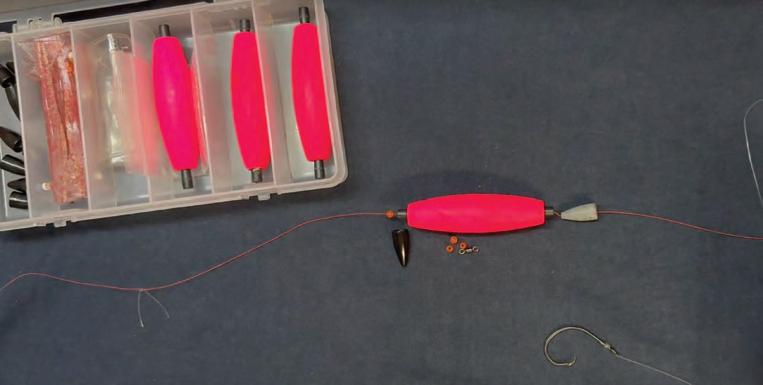
1 minute read
THE SLIDING CORK: FOR LIVE, CUT AND ARTIFICIAL BAITS
The sliding cork has been, and always will be, one of the most effective tools in any fisherman’s arsenal. Of course, we grew up fishing for everything from crappie to speckled trout and catfish under a sliding cork, with live and cut bait, but now I have incorporated artificial baits into the mix under the sliding cork.
For example, I have a rocky bottom area that’s 9 feet deep on high water, and a D.O.A. Shrimp set 7 feet deep is extremely effective on trout and red drum using this method. First and foremost, you don’t stay hung up in the rocks and oysters. It keeps the shrimp in the “strike zone,” and it drifts at the exact speed of the tide. It’s also a great way to cover a large area using the tide to take your bait as far away as you want to let it go. You can’t possibly cast a bait as far as you can let it drift. We’ve caught several hundred trout at this place over the years with live shrimp, but I’ve switched over to the artificial shrimp for convenience.
The sliding cork has long been our weapon of choice for making long drifts down the river for catfish and striped bass. It’s a great way to locate an area that’s holding fish. Once you start getting bites in an area along the drift, you can concentrate efforts where the fish are. One of my favorite places to do this is a stretch of river that’s 16 feet deep for a quarter mile. We’ll set the cork at 14 feet and fish the entire stretch very effectively without getting hung up. The sliding cork keeps the bait at the perfect depth and speed. under or start moving away.
This is also deadly effective on shallowwater grouper. There are areas along the west coast of Florida that hold grouper in very shallow water. You can’t get right on top of these fish to “bottom fish,” and I prefer this more quiet approach as opposed to trolling. Get up-current or up-wind from a rock and drift a nice bait back to them. When you see the float go under, get the fish in quickly or they will run into structure and break you off.
Note: Keep an eye on the position of your cork. It will stay upright as the weight keeps tension on it. If you see the float lay over, it means you just had a bite, because a lot of the bites are from fish rising to eat the bait. Shortly after that is when you see the float go
I’ve said all the above to say this: A sliding cork has application for dozens, if not hundreds, of places and species of fish.








